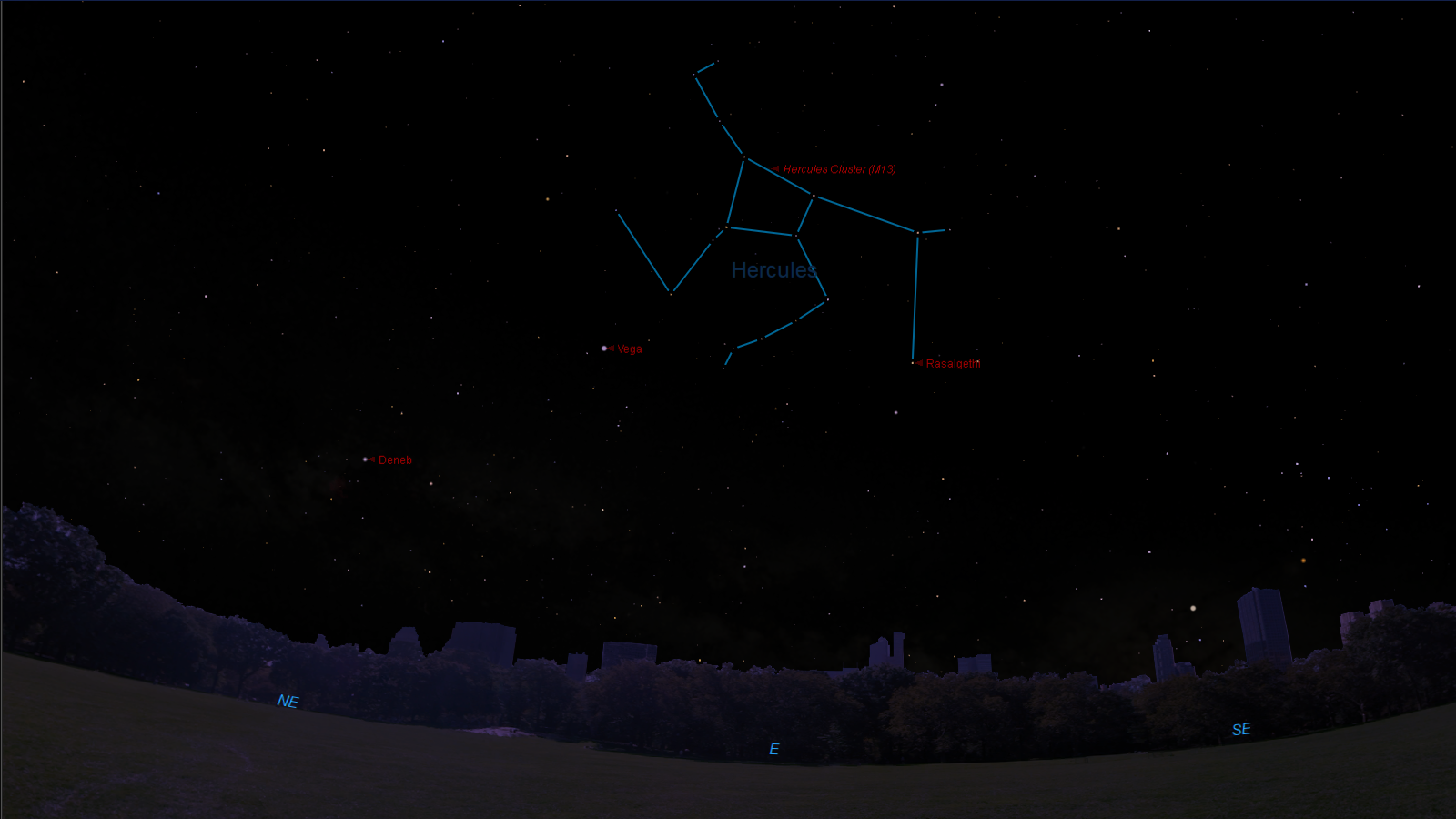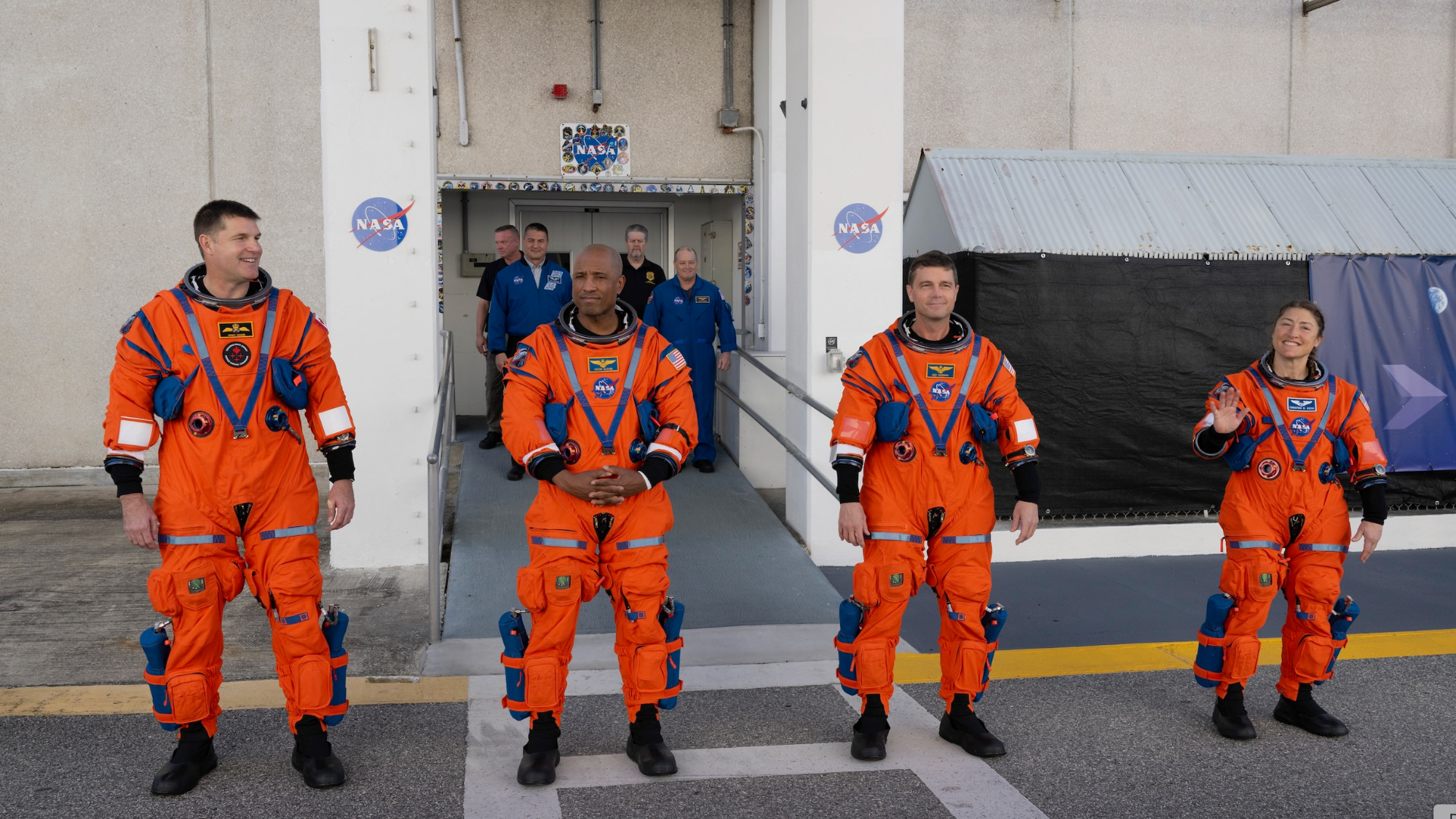Look for Hercules' Keystone in the Evening Spring Sky
On late spring evenings, a bright stellar "keystone" is well worth exploring with binoculars or a small telescope.
They say that on any given day, you can learn something new, and recently that happened with me. I was wondering why Pennsylvania is known as "The Keystone State," and now I know what a keystone is. It's a central, wedge-shaped stone at the top of an arch that holds all the other stones in place. While the exact wording cannot be confirmed with absolute certainty, it is believed that in the early 19th century, Pennsylvania was honored with the descriptive phrase, "the keystone in the federal union" and was later referred to as "the keystone in the democratic arch."
There is also a keystone in our current night sky: the Keystone of Hercules.
Related: The Top Skywatching Events to Look for in 2019
The Keystone is an asterism: a standout pattern or group of stars, usually possessing a popular name but not officially recognized as a constellation. Some might be surprised to learn, for example, that the Big Dipper is not a constellation, but merely a part of the constellation Ursa Major (the Big Bear). Another example is the Great Square, which marks the torso of Pegasus (the Flying Horse). These two examples certainly "stand out," as they are composed of bright stars that form a recognizable pattern.
In contrast, the Keystone of Hercules is famous out of all proportion to its rather unremarkable shape as well as its dimness. This week, we can find it almost directly overhead at around the witching hour of midnight local daylight time.
The legend of Hercules
Hercules was supposedly the strongest man who ever lived, hero of countless Greek stories and revered throughout the Mediterranean. And yet as a constellation he's rather weak, primarily because he is not easy to visualize. The stars are supposed to outline a man kneeling. Aratus, a Greek didactic poet who lived around 250 B.C., was the first to identify these stars as, simply, the "Kneeler." What makes things difficult for those attempting to trace this figure in the sky is that he is apparently performing acrobatics — because he is upside down. His head is marked by a star whose proper name is Ras Algethi, which means in Arabic "head of the kneeler." This is a reddish-orange star that varies irregularly in brightness, from magnitude +3.1 to +3.9. It's also a splendid, colored double star, with a fifth-magnitude, blue-green companion very close to the ruddy primary.
Breaking space news, the latest updates on rocket launches, skywatching events and more!
The body of Hercules is formed by six stars. Astronomer Robert H. Baker in his 1937 book, "Introducing the Constellations" (Viking Press, New York), said the set of six stars ". . . outlines a butterfly with outspread wings." At New York's Hayden Planetarium, we'd tell our audiences that these six stars formed Hercules' initial — the letter H. The four stars of the Keystone traditionally mark the strongman's waist and hips. At midnight, with these stars positioned overhead, if an arch were built from east to west across the sky, the Keystone of Hercules would indeed be at the top of that arch!
Four diverse stars
Two of the Keystone stars are third magnitude and the other two are categorized as fourth magnitude (smaller magnitudes are brighter); hence, we can say that this pattern is moderately dim and best seen under dark skies. Check it out for yourself, especially with binoculars, for each star has a story of its own to tell.
The brightest of the four is in the lower-right corner: Zeta Herculis, only 35 light-years away. Zeta is a subgiant star, about 2.6 times larger than our sun. It appears white and appears to have a slight yellowish tinge, for those who have a keen color perception. It is circled by a smaller star, roughly the same size as the sun. A much fainter third companion star is suspected, though little is known about it.
At the lower-left corner is the white Epsilon Herculis, the hottest — albeit the faintest — of the four and located 155 light-years from the sun. Like Zeta, Epsilon is also a multiple star system.
The upper-left and upper-right stars of the Keystone are Pi and Eta, respectively. Their relative low temperatures impart a golden-yellow color to each. Pi is 377 light-years away and is estimated to be approximately 1,300 times more luminous, 60 times larger and 4.5 times more massive than our sun. It is also suspected to have a planetary companion circling it. Eta is estimated to be 112 light-years away and is 50 times more luminous than the sun.
A celestial snowball
Finally, a third of the way from Eta to Zeta along the Keystone's western (right-hand) edge lies the Keystone's real claim to fame: M13 — the Great Globular Cluster of Hercules — generally regarded as the most dramatic such cluster in the northern sky. It's faintly visible to the naked eye as a fuzzy spot. A pair of 7-power binoculars will show M13 as a sixth-magnitude patch of light with a brighter core. But it is through a telescope that it becomes a sight to behold. A 6-inch telescope begins to resolve some of the cluster's several hundred thousand stars as individual pinpoints of light. Larger instruments show it as what my friend, veteran amateur astronomer and author Phil Harrington, describes as a "cosmic hive surrounded by countless bees, or a pile of sugar sparkling in moonlight."
Related: How to Choose Binoculars for Astronomy and Skywatching
I would certainly agree! In large telescopes of 10-inch aperture or greater, it literally looks like a snowball consisting of countless thousands of stars; some refer to it as a grand celestial chrysanthemum. There are nearly 100 such assemblages of stars in other parts of the sky, but this is one of the best. Clusters of this kind are far larger, and much farther away than open star clusters like the Pleiades, Hyades and Beehive. This particular globular is estimated to be 145 light-years across and about 22,000 light-years away.
The song and dance man of the sky?
While Hercules is generally regarded as a mighty strongman on Earth, in the sky he might actually have been based on a completely different person. Classical writers may have adopted the shape of this kneeling giant from some earlier legendary figure. Some argue that the constellation Hercules was based on Thamyris, a legendary bard, son of the king Philammon and the nymph Argiope. He was exceptionally talented and was able to sing, dance and play music on a harp. But Thamyris was also inordinately vain and boasted that he was not inferior to the Muses, the daughters of Zeus. On his way home one day he was met by them: They put his eyes out and took away his powers of song and music. He was left lame and blind and crouched on one knee.
Aratus never mentioned the "Kneeler" by name. But he did write: "Now that phantom that toils on his knees seems to sit on bended knee and from both his shoulders his hands are upraised." And there are those who believe that the man in question on bended knee was none other than Thamyris.
I guess if we were to draw an analogy to this in today's modern world, it might be like substituting a legendary performer like Al Jolson for a legendary grappler like Bruno Sammartino!
- Constellations: The Zodiac Constellation Names
- Catch the 'Winter Football' and Other Asterisms with Mobile Astronomy Apps
- See Double Stars in the Night Sky: A 'Starhopping' Guide
Joe Rao serves as an instructor and guest lecturer at New York's Hayden Planetarium. He writes about astronomy for Natural History magazine, the Farmers' Almanac and other publications, and he is also an on-camera meteorologist for Verizon FiOS1 News in New York's lower Hudson Valley. Follow us on Twitter @Spacedotcom and on Facebook.

Joe Rao is Space.com's skywatching columnist, as well as a veteran meteorologist and eclipse chaser who also serves as an instructor and guest lecturer at New York's Hayden Planetarium. He writes about astronomy for Natural History magazine, Sky & Telescope and other publications. Joe is an 8-time Emmy-nominated meteorologist who served the Putnam Valley region of New York for over 21 years. You can find him on Twitter and YouTube tracking lunar and solar eclipses, meteor showers and more. To find out Joe's latest project, visit him on Twitter.

